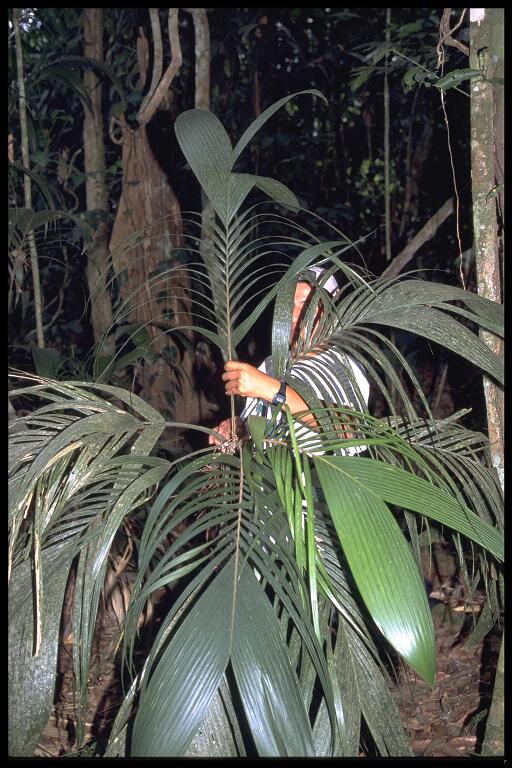Family: Arecaceae

Kingdom: Plantae Rank: Family Parent: Arecales Status: Valid
Common Names:
- Palm Tree Family - English, United States of America
Vegetative Morphology
Habit: Appearing like trees or shrubs, herbaceous to woody, without branches, rarely lianas.
Main axis: Stems solitary or clustered or rarely subterranean, often with spines.
Leaves: Leaves usually clustered near stem apex, simple or compound, pinnate or palmate, the petiole base sheathing the stem, often leaving a circular scar after dehiscing.
Reproductive Morphology
Inflorescence: Inflorescence axillary, solitary at a node or rarely multiple, spicate to paniculate.
Flowers: Flowers actinomorphic, bisexual or unisexual, often clustered, such as in clusters of three with one pistillate and two staminate flowers; sepals and petals usually 3 each; stamens 6 or more; gynoecium apocarpous or syncarpous, the ovary superior, the carpels 1-4 when apocarpous, 3 or more when syncarpous, the locules usually equal to carpels in number; placentation axile from base or apex, the ovules 1 per locule.
Fruit: Fruit a drupe with one or rarely two seeds, some genera with more than two embryos per seed, the endosperm often hard, sometimes ivory-like.
Seeds: Seeds one or more per fruit.
Other
Notes: Family typical of tropical and subtropical regions, and one of the most important economically.